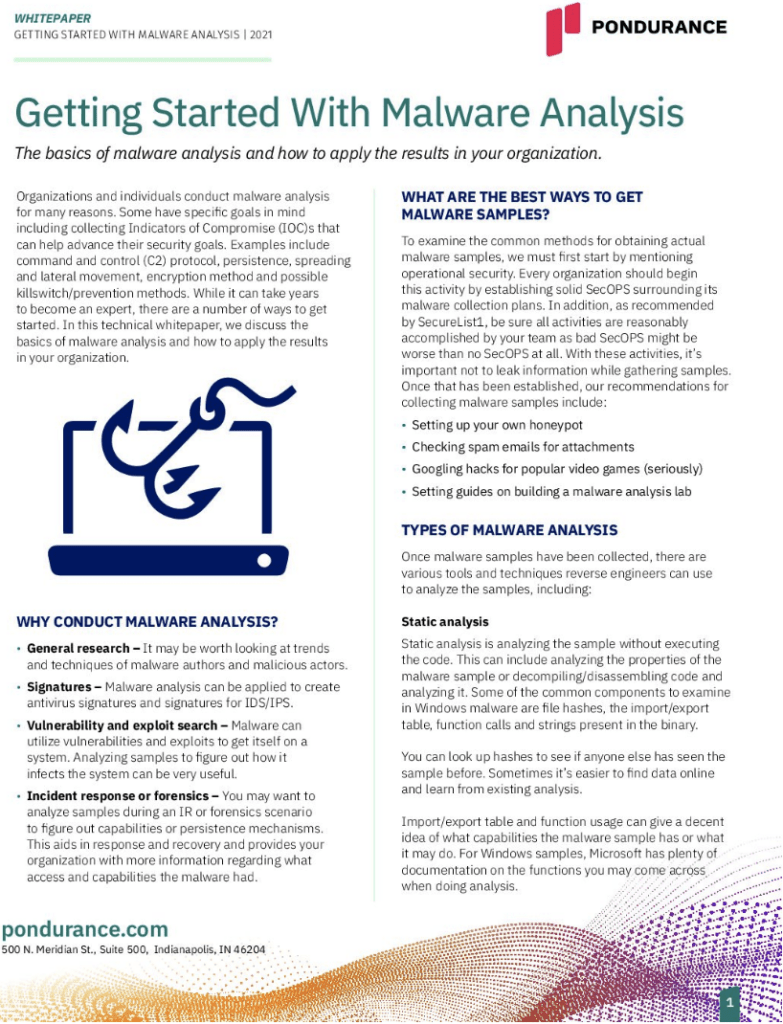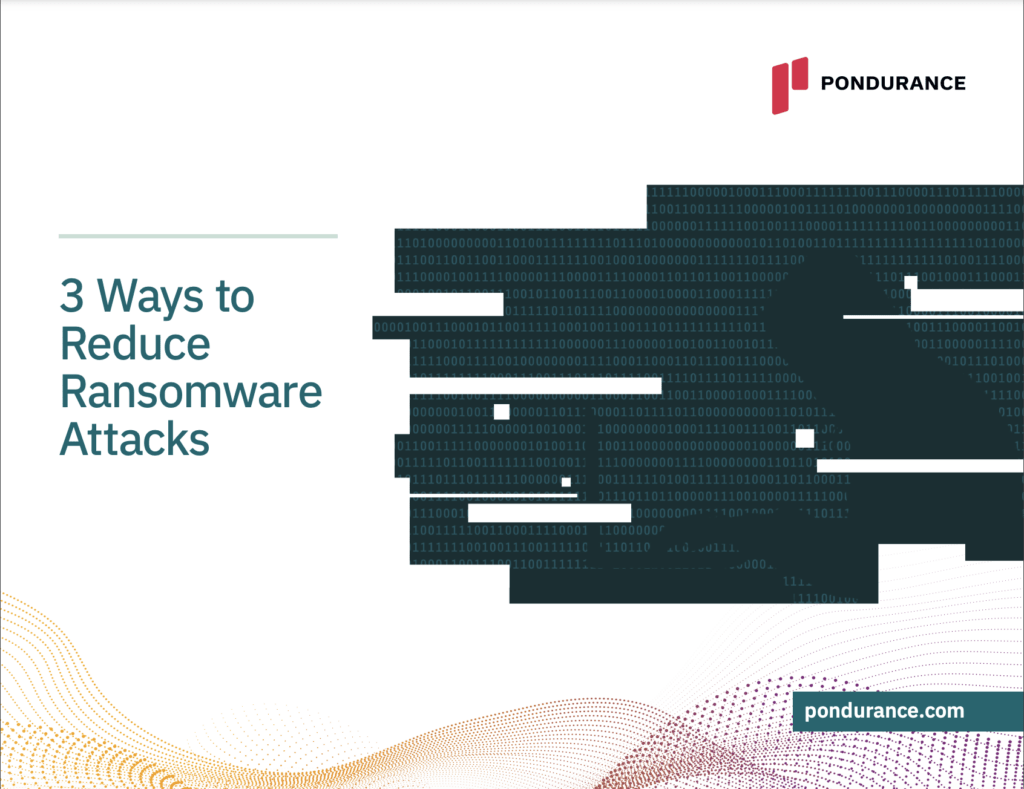Our privacy policy is located here.
Common Attack Vectors
And Keys to Protecting Your Business
Phishing
Additional Phishing Resources
Identify. Prioritize. Protect.
Malware
- Install reputable antivirus software and ensure it remains up to date
- Regularly update your operating system and all installed applications
- Enable built-in firewalls on your devices
- Be cautious of email attachments and links from unknown sources
- Utilize strong passwords and enable multifactor authentication (MFA) where possible
- Create regular backups of your important files and store them securely offsite
- Employee training – Educate staff members about potential threats such as phishing emails and social engineering tactics employed by cybercriminals
- Network segmentation – Divide your organization’s network into separate zones to minimize the spread of malware should an attack occur
- Vulnerability management – Regularly assess, identify, and remediate vulnerabilities in your IT infrastructure before they can be exploited by attackers
- Incident response planning – Develop a well-defined incident response plan outlining roles, responsibilities, and procedures to follow when faced with a security breach
Ransomware
- Keep all computers and devices patched
- Enable MFA
- Limit user access
- Allow only authorized applications
- Use network segmentation
- Limit remote access as much as possible
- Establish 360-degree visibility
- Monitor and analyze logs
- Provide consistent security awareness training
- Encrypt endpoints
Spear Phishing
Additional Spear Phishing Resources
Business Email Compromise (BEC)
Additional BEC Resources
Phishing Attacks
Phishing attacks are a prevalent and growing threat faced by organizations across various industries, highlighting the need for robust cybersecurity measures. These malicious attempts to deceive individuals into revealing sensitive information or credentials play a significant role in the ever-evolving cybersecurity landscape. Understanding the importance of phishing awareness, as well as the meaning and risks associated with this type of cyber risk, is crucial for businesses to protect their assets, reputation, and customer trust.
The phishing attack definition revolves around the concept of social engineering – manipulating human behavior through deceptive tactics to gain unauthorized access to sensitive information or systems. The term “phishing” originates from the word “fishing,” as attackers “fish” for victims by casting a wide net in the form of seemingly genuine emails or messages, posing significant challenges for informed security teams. Once hooked with convincing bait, unsuspecting recipients may be enticed to click on malicious links or attachments, leading them down a dangerous path where their personal information can be exploited. Phishing attack emails often appear legitimate at first glance, imitating familiar brands or mimicking trusted sources such as banks or government agencies.
However, upon closer inspection, one may notice subtle discrepancies like misspelled words or incorrect domain names that hint at the email’s true malicious intent. If successfully deceived, victims may inadvertently provide sensitive information like login credentials or financial details directly to cyber criminals, resulting in potential impacts like data breaches or compromised information systems. Understanding and recognizing these risks highlights the importance of phishing awareness among employees and organizational stakeholders, necessitating robust cyber risk management strategies.
By raising awareness and training staff members on identifying suspicious communications effectively, organizations can prevent potential breaches and minimize any damage resulting from successful attacks. Phishing attack prevention measures extend beyond just employee education; implementing robust security protocols such as multi-factor authentication (MFA), email filtering systems, and regular software updates can also help mitigate risk in conjunction with increased user vigilance. In addition, having dedicated cybersecurity teams that continuously monitor networks for unusual activity and potential threats ensures that any instances of phishing are quickly identified and addressed, bolstering overall security posture.
In today’s digital age, the risks of phishing attacks continue to intensify as cybercriminals become increasingly sophisticated in their tactics, necessitating ongoing cyber threat assessment and threat intelligence utilization. For this reason, it is more important than ever for organizations to proactively educate themselves on the various types of phishing attacks, recognize the telltale signs of these malicious attempts, and employ preventive strategies to minimize vulnerability and cyber risk reduction.
By embracing a multi-layered approach to cybersecurity, businesses can better protect themselves against the evolving threat landscape while maintaining trust with their customers and partners. In conclusion, phishing attacks present a significant risk in today’s interconnected world, underscoring the critical role of top cybersecurity companies and proactive security measures. The importance of phishing awareness cannot be overstated, as increased understanding and vigilance can help safeguard sensitive data from falling into the hands of cybercriminals, thereby safeguarding information systems and maintaining organizational resilience. It is incumbent upon organizations to invest in comprehensive cybersecurity measures that encompass robust technical solutions alongside employee training initiatives, fostering a culture of cybersecurity awareness and resilience throughout their enterprise.
Phishing Attack Techniques
Phishing attack techniques constantly evolve as cybercriminals find new and sophisticated ways to deceive individuals and organizations into revealing sensitive information or granting unauthorized access to systems. Phishing attacks can take various forms, including email phishing, spear phishing, and other phishing attacks. By understanding these techniques, organizations can better protect themselves against cyber threats.
Email Phishing
Email phishing is one of the most common types of phishing attacks. In this technique, attackers send deceptive emails that appear to be from a legitimate source to trick recipients into revealing sensitive data such as login credentials or financial information. These emails often contain fraudulent links or attachments that may install malware on the victim’s device if clicked. A prevalent example of an email phishing attack is when an attacker impersonates a well-known brand or organization with a seemingly official message prompting users to update their account information or confirm their identity.
Spear Phishing
Spear phishing meaning is: a more targeted variant of email phishing, where attackers tailor their messages to the intended victim. This personalized approach increases the likelihood of success for the attacker since the recipient may be more inclined to trust a message that appears relevant and familiar. For instance, spear phishing emails may contain details about the target’s personal life or job role, making it difficult to discern whether it is genuine communication from someone they know or trust.
Other Types of Phishing Attacks
Numerous other types of phishing attacks vary in complexity and intent. Some of these different types include:
Vishing (Voice Phishing): Attackers use phone calls instead of emails to deceive victims into providing sensitive information.
Smishing (SMS Phishing): Similar to vishing, it employs text messages as the medium for deception.
Clone phishing: A legitimate email is duplicated and modified by the attacker to include malicious content before being sent to the original recipient.
Whaling: This technique targets high-ranking executives within an organization, often using personalized emails that appear to be from legal or financial institutions.
Learning about various phishing attack techniques and their associated characteristics helps organizations prepare for potential cyber threats. Educating employees on identifying phishing emails, such as looking for suspicious sender addresses, URLs, or attachments, is critical in decreasing the risk of successful attacks. Artificial intelligence (AI) and automation have come a long way in detecting phishing threats. However, human experience remains essential since attackers are not machines; they are people who can adapt their strategies to bypass security measures.
Combining advanced platforms with human intelligence like Pondurance is vital in speeding up detection and response times while containing cybersecurity threats quickly and effectively. This comprehensive approach helps protect organizations’ missions from the ever-evolving landscape of phishing attack techniques and other cyber threats.
How to Prevent Phishing
Phishing attacks are a pervasive threat that organizations of all sizes and industries face daily. These nefarious cyber threats typically delivered through deceptive emails, aim to deceive individuals into providing sensitive information or granting unauthorized access to critical systems. As phishing continues to evolve in sophistication, it is more important than ever for businesses to stay informed about how to prevent phishing and adopt effective strategies for safeguarding their digital assets.
One effective way to reduce the risk of phishing is by educating employees about the potential dangers associated with suspicious emails. Staff members should be well informed on how to identify phishing emails by examining senders’ addresses, scrutinizing email content for grammatical errors and inconsistencies, inspecting URLs before clicking them, and being cautious with unsolicited attachments.
Conducting regular training sessions and simulations can empower your team with the knowledge needed to recognize these threats proactively. However, knowing what to do with suspicious emails goes beyond just employee awareness. Organizations must also establish robust reporting mechanisms for staff members to safely report suspected phishing attempts. This may involve designating specific IT personnel or implementing an internal system that allows users to flag suspicious messages easily. To prevent phishing emails from reaching inboxes altogether, companies need to implement advanced email filtering systems that can analyze incoming messages for malicious characteristics such as known attacker signatures or unusual sender behavior patterns.
By leveraging modern artificial intelligence technologies alongside traditional rule-based approaches, these filters can adapt continually and provide enhanced protection against emerging threats. Another effective method of preventing phishing involves employing multi-factor authentication (MFA) across all accounts and systems within an organization. By requiring users to confirm their identities through multiple means – such as passwords combined with unique codes sent via SMS or authenticator apps – MFA significantly reduces the likelihood of a successful attack even if a phisher obtains one set of credentials.
Organizations must ensure they maintain up-to-date security measures across their entire infrastructure: firewalls configured properly, intrusion detection systems implemented, and regular penetration testing conducted. By continually monitoring for potential vulnerabilities and addressing them proactively, businesses can significantly reduce their overall attack surface and lower the risk of falling victim to phishing or other cyber threats. Finally, it is critical for organizations to have a comprehensive incident response plan in place to help minimize damage in the event of a successful phishing attack. Such programs should outline clear roles and responsibilities, communication protocols, and steps needed to contain cybersecurity threats swiftly.
By partnering with experienced security professionals – such as Pondurance’s team of experts – businesses can leverage decades of human intelligence in conjunction with advanced technology platforms to detect, respond to, and mitigate cyber incidents effectively. In conclusion, the key to preventing phishing attacks lies in a multifaceted approach that encompasses education, prevention strategies such as email filtering and MFA implementation, ongoing security maintenance across infrastructure components, and a well-prepared incident response plan. By adopting these measures and staying informed about emerging threats, organizations can significantly decrease their risk exposure while ensuring the continued success of their mission. To learn more about Pondurance’s cybersecurity solutions backed with human intelligence, request a demo today.
Related Topics
- Mdr Consultant
- What Is Incident Response
- Ransomware Playbook
- Mdr Solution
- How To Prevent Ransomware Attacks
- What Is Mdr
- What Is Managed Detection And Response
- Mdr Services
- Managed Detection And Response
- Mdr Cybersecurity
- What Is Mdr In Cybersecurity
- Spear Phishing
- Cyber Incident Response
- Threat Hunting
- How To Protect Against Ransomware
- Endpoint Detection And Response
- What Is Malware
- What Is Ransomware
- Security Operations Center

